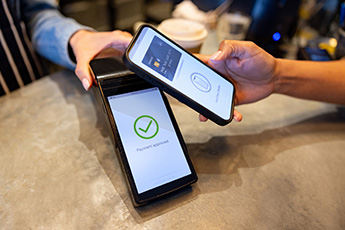You may have heard that the white willow tree’s bark is where the origins of aspirin started. It has been told that Hippocrates used the bark as a pain reliever. Although the bark is bitter and can cause stomach aches, so it is not exactly clear how it was consumed. We do know that in the mid-1700s, Reverend Edward Stone dried the bark to a powder and used it to relieve fevers. The real breakthrough came when a researcher at the German company, Bayer, chemically altered salicin extract from the willow tree. Aspirin was created and then patented in 1899. Aspirin has been used millions of times in the past two centuries, including by many bankers. With digital banking on the rise and checks on the decline, will bankers be facing another headache? Due to multiple trends and changes in behaviors, checks have decreased in usage by 66% in the past 18Ys. Just 14.5B checks were written across the US in 2018, down sharply from 42.6B checks in 2000. In fact, more than a few Gen Zers might not even know how to fill out a check, instead preferring P2P rails and using their checking accounts more simply as a payment transit hub.“Younger consumers are less wedded to the term ‘checking account’ and think of it more as a ‘digital access account,’” says one industry analyst. “Within five to 10 years, I think we’ll be calling it something else.”For now, enough businesses are still somewhat relying on checks to either pay vendors or freelance workers or receive money from customers, including other businesses. This makes it the most common B2B payment method today. While checks increase the lag time that funds are held in company accounts, that will change when FedNow and other instant payment rails become ubiquitous.So, what does all this mean for community financial institutions (CFIs) that rely on the basic noninterest-bearing transaction account as the cornerstone of almost all customer relationships? First of all, put your mind at ease — the account itself is definitely not going away. Roughly 80% of adults still have one. Still, how can CFIs keep these accounts relevant for their customers?
- Emphasize the functionality. This account is at the center of transactions — a financial hub. Make it easy for businesses to transfer money from their accounts to other accounts, while providing quick visibility to available credit and debt. Bank of America calls its business checking account, “an all-in-one business checking solution.” Its checking account solution can include cash flow monitoring tools, Zelle for businesses, and customized employee access. Continuing to make it simple for your customers to use their checking account to do business ensures deposits will keep flowing there.
- Increase engagement with APIs. Providing additional tools and services through third-party APIs, such as payroll and accounting software, can make your customer’s life easier, while providing CFIs with extra revenue opportunities. “The adoption of open banking is accelerating with one-stop-shop marketplaces,” says Andrew Beatty, Head of Global Next Generation Banking at FIS. “Banks with a vision and strategy to improve customer propositions will increase engagement and build loyalty.”
- Tap into cross-selling. Checking accounts are a gateway to other solutions at your institution. Account holders are over 40% more inclined to take out a loan with the same institution, threefold more likely to add extra depository accounts, and over 80% more prone to stick with the same institution for as long as they live. This customer stickiness pays off in spades, not only as customer loyalty, but also in cross-selling and up-selling opportunities.
- Leverage as digital payments hub. Even though many small and medium-sized businesses (SMBs) still process checks, there can be a steep cost to process a check – between $4-$20. They cost businesses 10x more than digital payments. Leveraging the checking account as a digital-payments processing hub will save your customers time and money. With the increased efficiency, more time and energy can be spent on the business, not on processing payments.
While the lifecycle of the paper check may be on the decline, the checking account is still valuable, especially if you continue to enhance its role as a hub for more efficiency. Remind your customers of the functionality and then use it for engagement, cross-selling, and as a digital-payments hub. The noninterest-bearing transaction account is here to stay.




